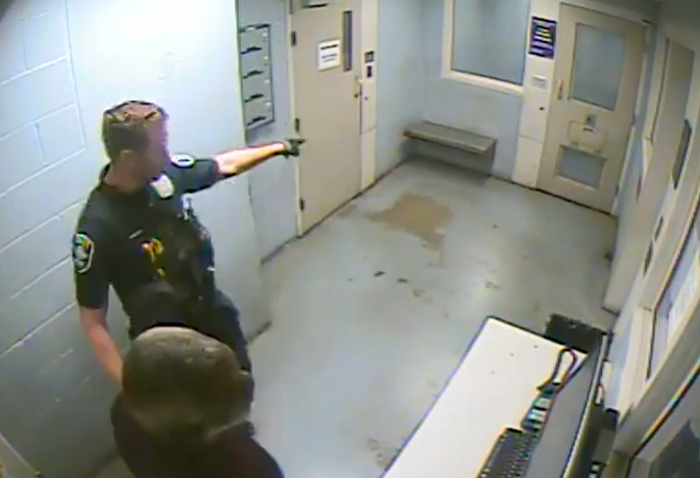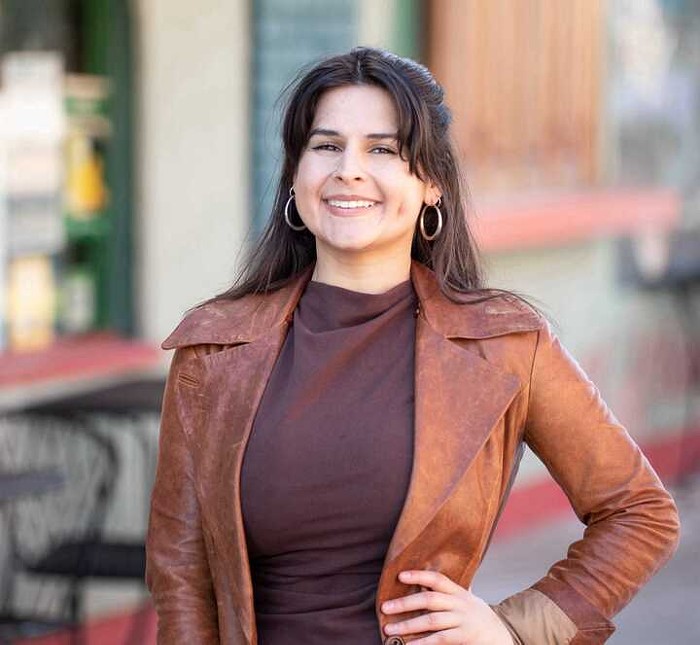In the summer of 1998, Hughes dared to go where no male had gone before--to a Seattle SuperSonics dance team tryout. For veterans of such estrogen-heavy auditions, the mere appearance of Hughes, a graduate of Burien's Evergreen High School, was enough to turn heads.
"I didn't show up thinking I'd make the team," says the charmingly modest Hughes. "I just wanted to see what it was like. It was really thrilling when they took me seriously."
Once the only gigger with a cock in his sweats started poppin'-and-lockin' at the audition, it was obvious to choreographer Stephanie Kohr that she was staring down a gender and stylistic test. "He blew us away," says Kohr, taking a few moments to chat before a sweaty workout at the Bellevue Place Club. "Jaret set a trend. Now there's just a massive amount of male talent [at auditions]."
As a longtime Sonics devotee grown comfortable with the modus operandi (female T&A) of the dance team, watching Hughes perform in his inaugural season sent a shock up my spine. When I saw a man walk out with the squad, I snorted. But it took Jaret only a one-minute routine to turn my "that is so gay" into awestruck admiration. With all due respect to the female members of the squad, Hughes blew them off the court in terms of skill, forcing horny hoop fans around the Key to turn part of their focus from the midriffs of the gleaming gals to the squad's collective talent--or at least Jaret's.
"We're trendsetters," Kohr boasts, pointing to the fact that, with Hughes' addition, her troupe became the first in the National Basketball Association to feature a male dancer. But while the reception has been warm enough for Kohr to expand the number of males on her squad from one to five, the notion of dude dancers hasn't exactly caught fire, to put it mildly.
Currently, only the Sonics, the Portland Trailblazers, and the Atlanta Hawks count men among their dance team ranks, with the New York Knicks trying--and failing--to inject some testosterone into their act. Asked if a large, open-minded metropolis such as Los Angeles would be keen to the notion of male dancers, Kohr quickly says it wouldn't fly. But in Seattle, at least, the male invasion suits us just fine.
"They're great," says Kristine Cox, one of Hughes' female squad mates and a perky number who also pulls duty as a University of Washington cheerleader. "And they're very fashionable--sometimes I think they enjoy the free salon more than we do."
Most of the female dancers are in it for the fun, but Hughes and his male teammates--Daniel Cruz, Kenny Harlow, Robert Luu, and Gene Osias--are dancing in the Key to get noticed. Harlow toils in the Starbucks marketing department by day, so Howard Schultz's recent purchase of the Sonics has made Harlow the consummate company man. For his part, Harlow co-founded the hiphop troupe Be in Effect with his buddy, Luu, by far the most animated of the bunch. "I want to be just like Jennifer Lopez--music, videos, acting... everything," enthuses Luu. "Yeah, J. Lo and Jet Li," quips Harlow, referring to Luu's shared heritage with the Korean action star.
"People are entitled to their opinions," Cox says in response to allegations that hiphop dancing is easier for the guys to pull off--and that her male teammates can dance circles around the women. "Sometimes they can be tighter and more sharp," Cox explains, "as they have more muscle." Hughes acknowledges the perceived skill gap, but notes that this doesn't come into play during the course of a performance because "we're a team."
Twenty-one-year-old Erika Petersen's decision to forego college cheerleading in favor of a four-year stint at the Key makes her both the Rashard Lewis of the dance team and its longest tenured member. The women on the team, Petersen insists, are dancers first, "not just tight outfits, big hair, and lots of makeup." But when presented with the theory that, while the guys are judged solely by skill, the girls have to pass an aesthetic litmus test as well, all the ladies object--but not the way one might expect.
"You have to have a good package," says female dancer Audrea Jones, "and that goes for the guys as well as the girls."


















